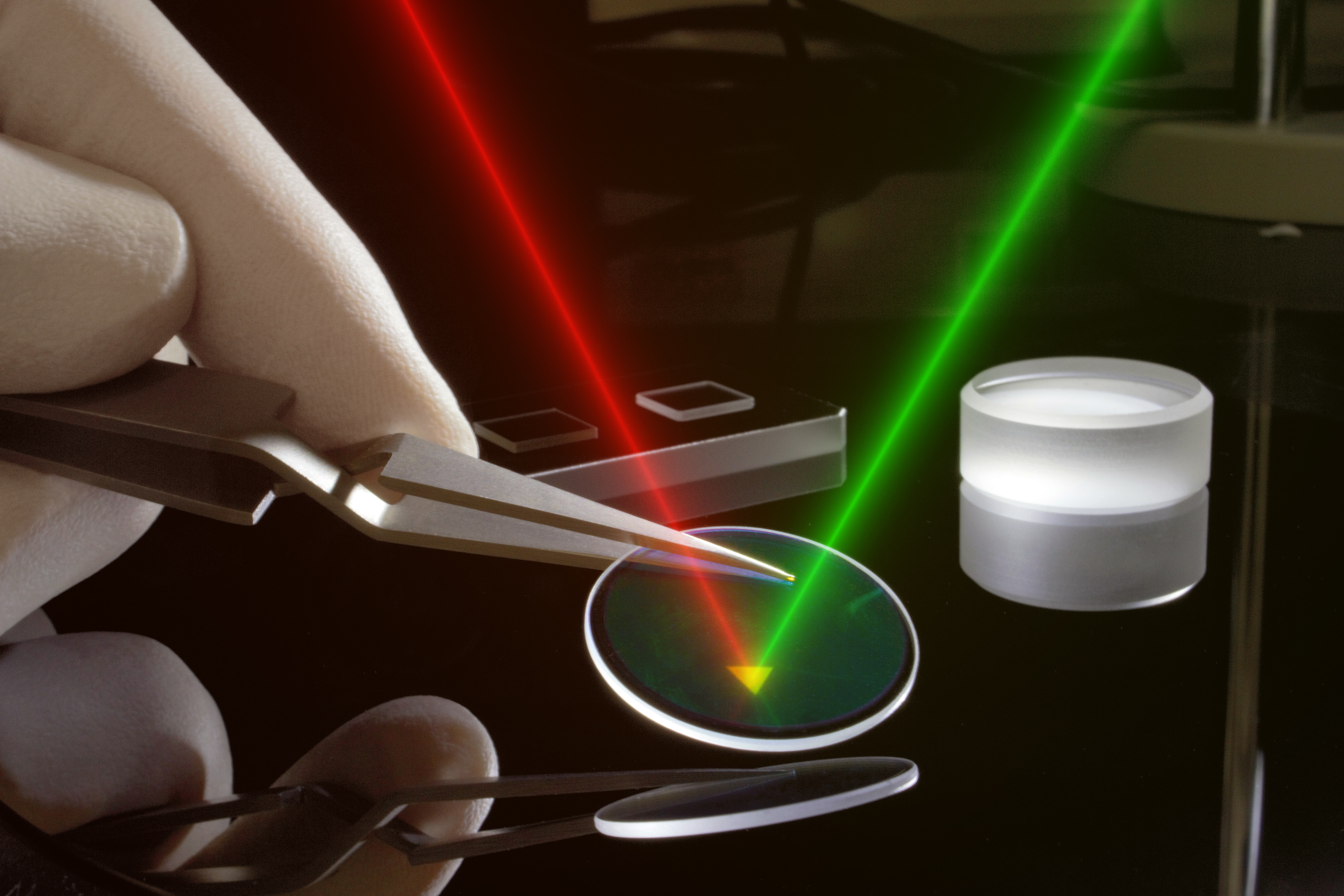Jena / September 3, 2024
Small quantum source with big application potential
Breakthrough in quantum optics: Miniaturized source for entangled photon pairs
An international research team involving scientists from the Fraunhofer Institute for Applied Optics and Precision Engineering IOF and the University of Jena has made a significant advance in quantum optics. Using so-called 2D materials, the researchers developed a new method for generating entangled photon pairs. They have now published their results in an article in the renowned Nature Communications Journal.
Researchers from Jena, Canberra and Darmstadt present a new source of entangled photon pairs that is remarkably small. The system measures just 10x10x10 micrometers. With these dimensions, it could easily be integrated into compact devices. This is a decisive advantage compared to conventional quantum sources, which are often significantly larger and more complex to handle. They have now published their results in an article in the renowned Nature Communications Journal.
In the miniaturized quantum source, the researchers use the special properties of a two-dimensional material to entangle the photons. The crystal used can naturally generate entangled photons without the need for additional components. The type of entanglement of the photon pairs can also be modified using a pump laser. This enables the system to be extremely small and yet just as efficient.
Quantum system for portable devices
The ability to create entangled photon pairs on such a small scale and with tunable properties could have far-reaching implications for the development of quantum computers and quantum communication systems. For mobile communication and portable devices in particular, this opens up a new field that has so far remained untapped due to the size and complexity of the technology required.
The results of this research mark a significant step towards practical applications of quantum optics and could form the basis for future developments in secure data transmission.
The next research goal is to increase the generation rate by quasi-phase matching and to integrate the source into monolithic cavities with high quality in order to improve the pair generation rate. The integration of these sources into photonic chips will also be explored to develop QKD devices en miniature. In addition, the use of novel materials and metasurfaces will be investigated to create even brighter and more versatile sources.
A technological breakthrough thanks to global collaboration
One mayor factor of this success is the collaboration between the Friedrich Schiller University Jena with the cooperation of Fraunhofer IOF researchers, the Australian National University in Canberra and additional contributions from the Technical University of Darmstadt. This international cooperation within the IRTG MetaActive project underlines the importance of global collaboration in science to achieve technological breakthroughs.
Original publication
Weissflog, M.A., Fedotova, A., Tang, Y. et al. A tunable transition metal dichalcogenide entangled photon-pair source. Nat Commun 15, 7600 (2024). URL: https://doi.org/10.1038/s41467-024-51843-3
